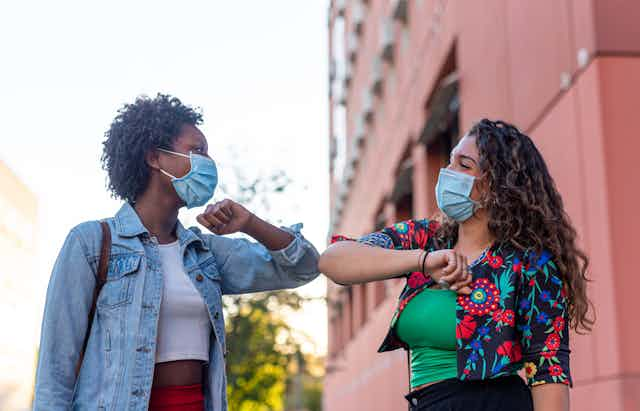To combat the sharp rise in coronavirus infections, the UK government and the devolved administrations have imposed the “rule of six”. The rule stipulates that no more than six people can meet socially – although a few exemptions apply.
The day before the rule came into force, Carl Heneghan, a professor of evidence-based medicine, and Tom Jefferson, a research fellow, both from the Centre for Evidence-Based Medicine at Oxford University, wrote an opinion piece for the Spectator, calling for the rule to be “binned”. The Daily Telegraph repeated Heneghan and Jefferson’s assertion that “life should return to as close as possible to normality”.
The number of COVID-19 cases has been rising rapidly in the last week. Unlike earlier in the summer when there were local outbreaks, the upsurge is now much more widespread. But hospital admissions and deaths are still relatively low, which prompted Heneghan and Jefferson to argue against tightening control measures. They might turn out to be right, but there are several reasons for not following the path they recommend.
Three good reasons
First, for much of the summer, most cases were in young people, who are at low risk of serious complications after infection. But there is now evidence that the rates of infection among older age groups are going up.
One thing we have learned in this pandemic is that even places held up as successful examples of pandemic control, such as Germany and Hong Kong, have not managed to shield the vulnerable when community transmissions rise above certain levels. Indeed, the UK Department of Health wrote to care homes on September 11 2020, warning them of signs of a rise in cases among care home staff.
Second, in the city of Leicester in the English midlands, where there was an outbreak in the summer, the increase of cases was reflected in hospital admissions and deaths. In July, there were 24 deaths in Leicester, more than any other local authority areas in the UK.
The city has a population of around 330,000 or about 1/200 that of the UK. If we crudely extrapolate its death rate in July to the entire UK, there would be 4,800 deaths in a month, or 160 daily. And this estimate is conditional on the epidemic curve not rising further since Leicester entered into a local lockdown. Is this a level that the society should accept as part of the “new normal”?
Spain and France have also seen a large upsurge of cases in recent weeks. That the number of deaths in these two countries is “limited” to several dozens a day properly emboldens commentators such as Heneghan and Jefferson, but they have forgotten that control measures have also been introduced there. They have probably forgotten also what happened in the spring in the UK.
Using Birmingham as an example, the level of community transmission now might be similar to the first week of March given the lack of testing then. A delay in introducing national lockdown then probably caused hundreds of extra deaths in Birmingham.
The chief executive of the local NHS Trust, which had the largest number of COVID-19 deaths in the UK during the first wave, said last week that there had been obvious surges in intensive-care admissions in the last two weeks. As a Birmingham resident whose office is 200m from the intensive care unit of this hospital, I can perhaps be forgiven for being less sanguine than Heneghan and Jefferson seem to be.

Third, COVID-19 doesn’t just cause death. A substantial number of patients also suffer from what is now known as “long COVID”. It is irresponsible to discount the risk of exposing millions of people to the infection when so little is known about the long-term prognosis.
Simple instructions
Johnson’s rule of six may prove to be over-cautious, as Heneghan and Jefferson suggest. Interestingly, they included Chris Whitty, England’s chief medical officer, in the group of “little more than a Dad’s Army of highly paid individuals” who came up with the idea. However, several senior members of Sage (the government’s scientific advisory committee) have now issued stern warnings. Meanwhile, Anthony Fauci, the eminent US physician, cautioned against looking at the rosy side of things in a pandemic.
The rule of six is an attempt to halt the virus and to simplify instructions. One of its important objectives is for schools to remain open and for university students to return to campuses. That is, for life to return to some normality. It would also still allow catering venues to operate. If those senior scientists are wrong, I would be as ecstatic as anyone to see the rule binned in due course. But if we listen to Heneghan and Jefferson now, the damage may be irreversible.

